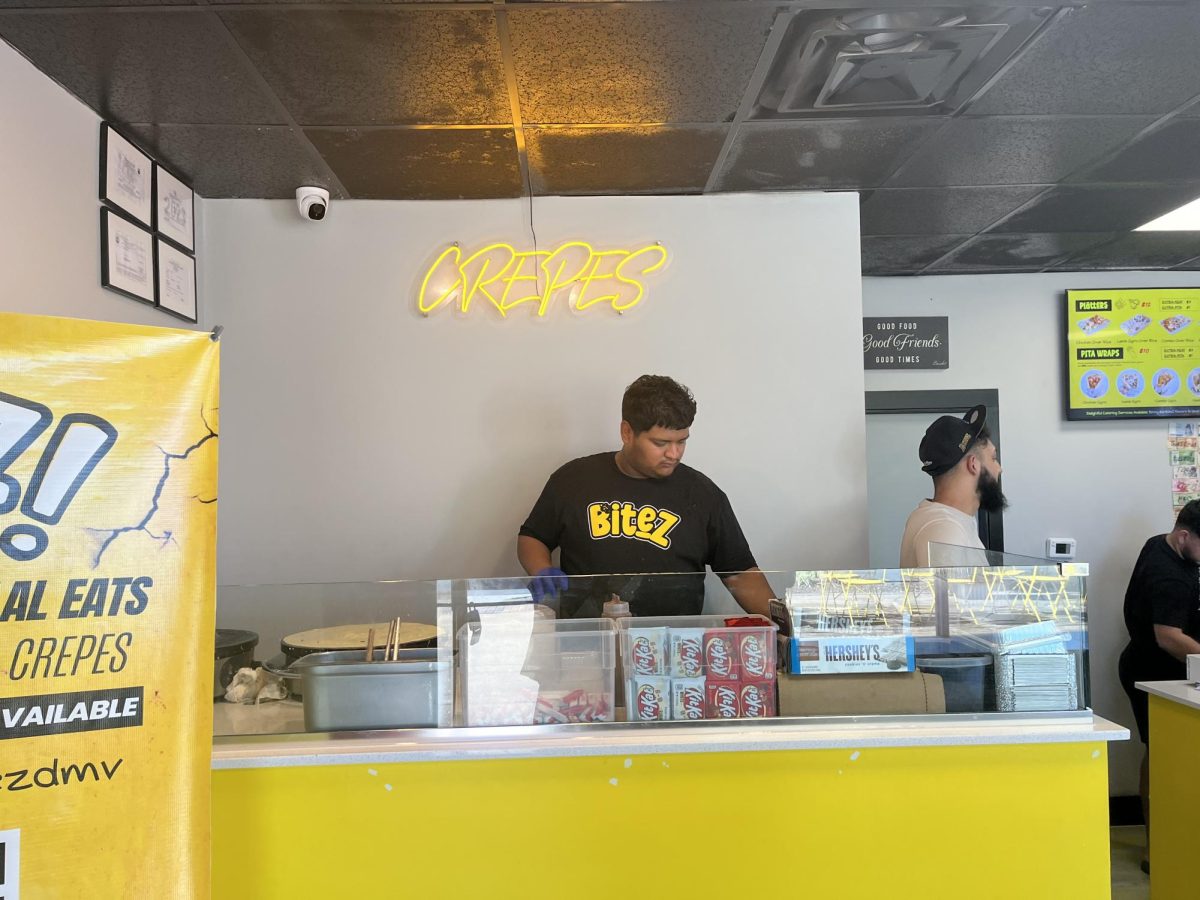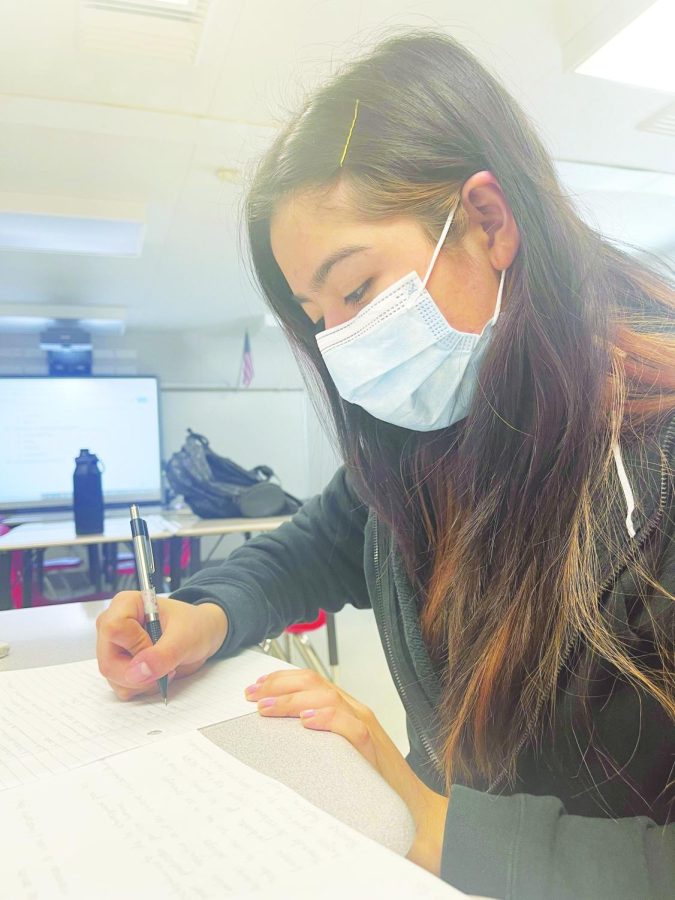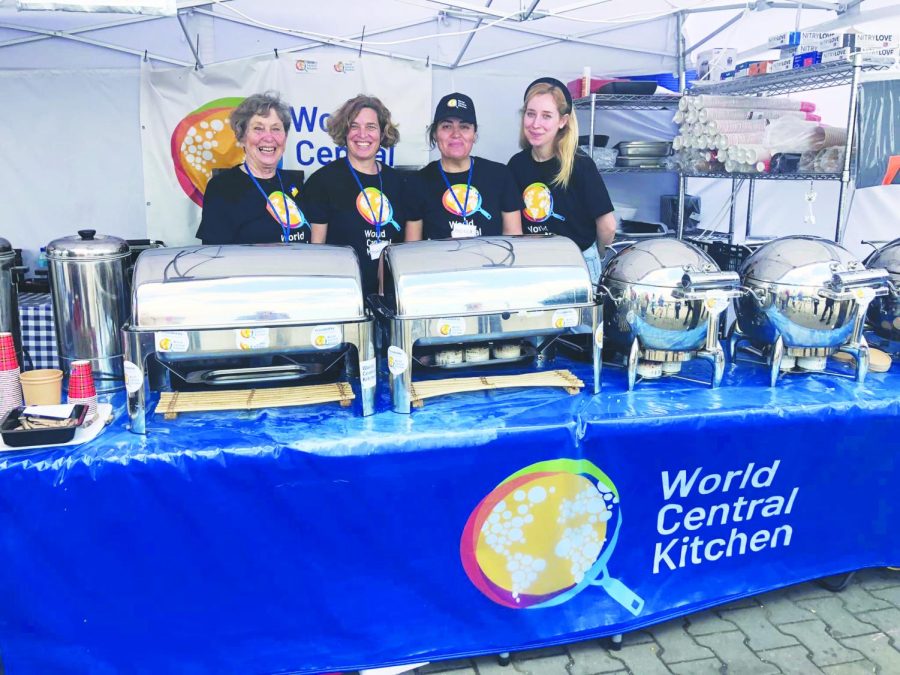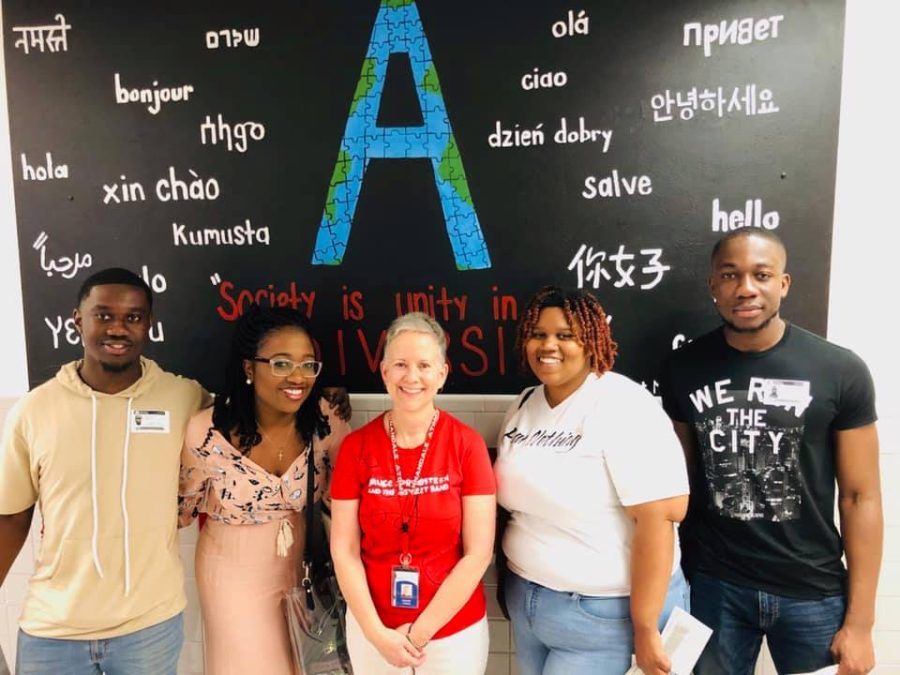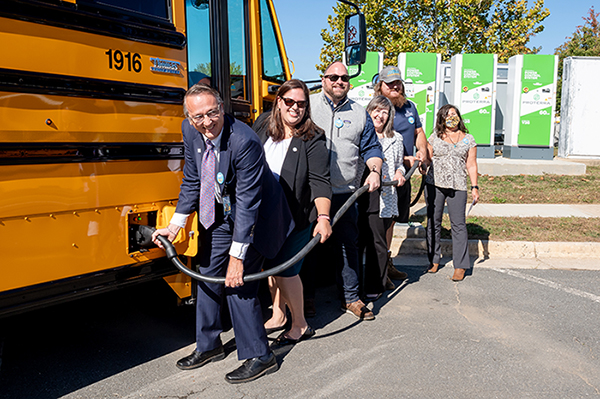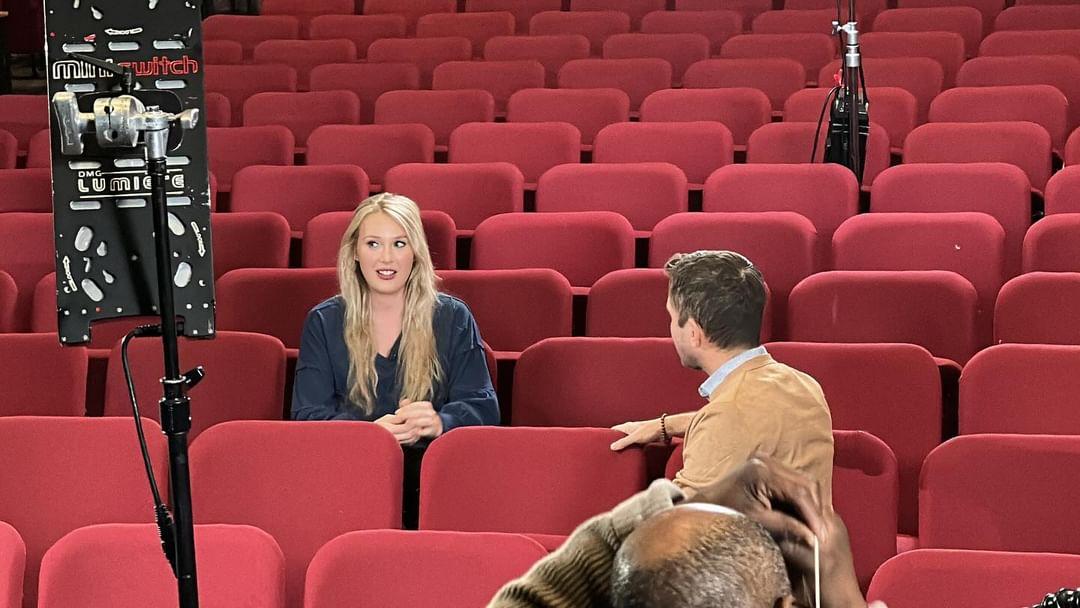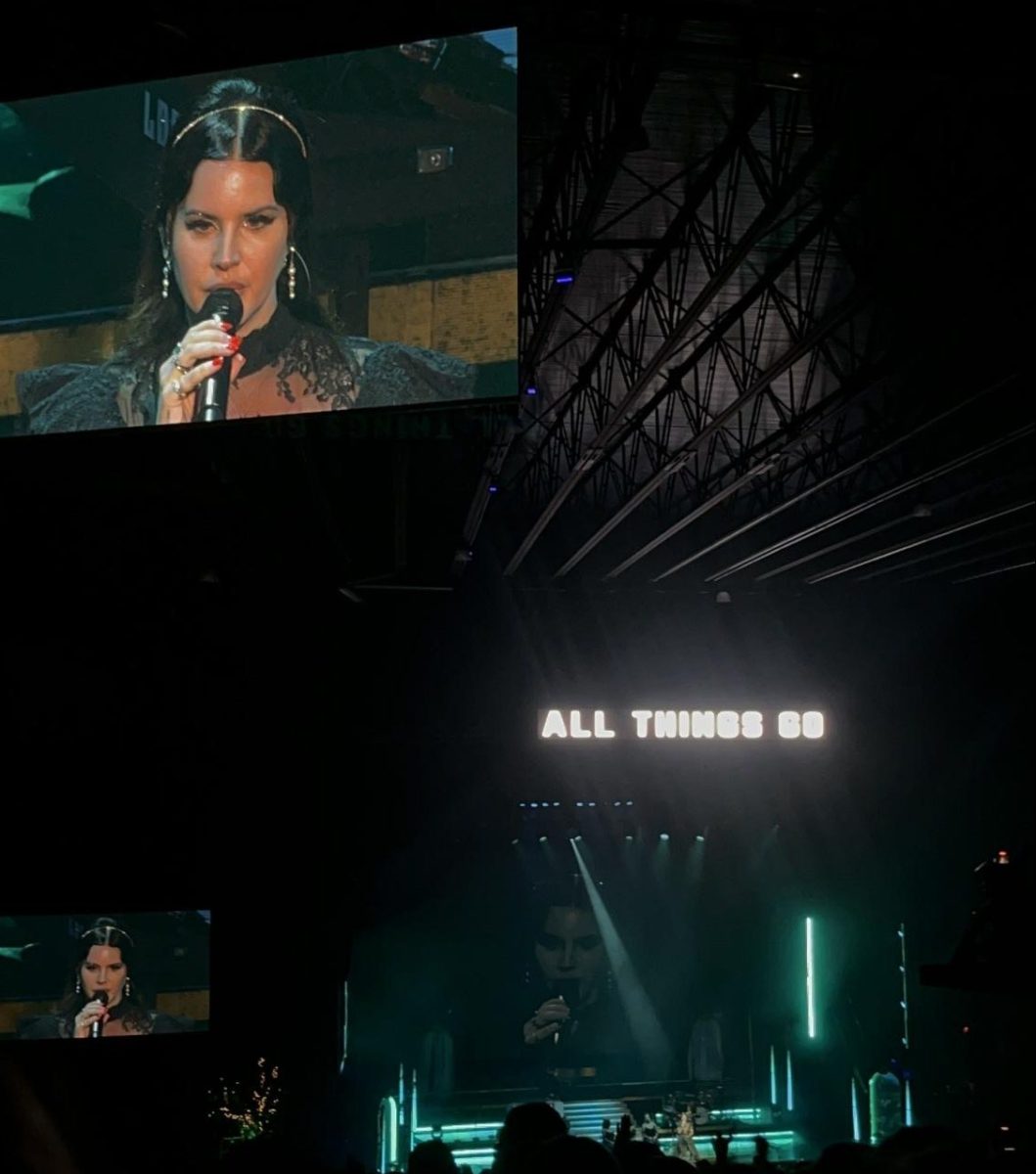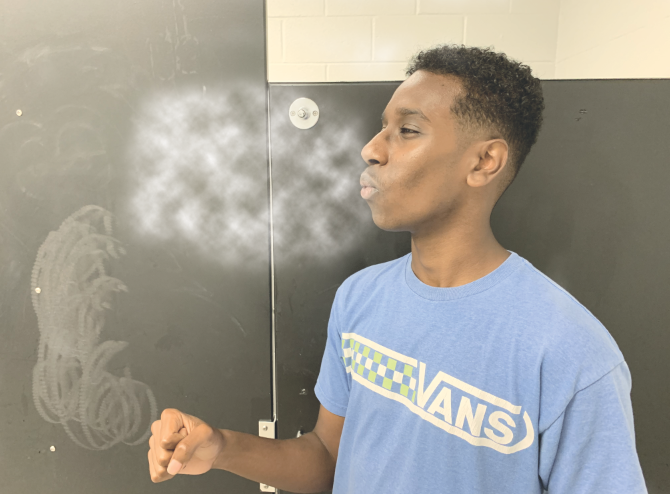Save for their cumbersome camera load, the two Afghan journalists who visited AHS on March 29 blended right in to the school’s diverse population.
Here to make a documentary comparing and contrasting journalism in the US and Afghanistan, reporter Nabila Horakhsh and reporter/cameraman Raseed Zwak observed what American classrooms are like.
After arriving at 9 a.m. to meet and greet Principal John Ponton in the Prinicpal’s Conference Room, Horakhsh and Zwak were escorted by SGA students to Samantha Spinney’s R1 Flex class for a few minutes before visiting the Publications Lab for about an hour.
There, both professional and amateur journalists were provided with the opportunity to learn about journalism in Afghanistan and America.
“It’s kind of cool. We get to ask them questions about what they do, and share what we do, and see what’s different,” sophomore yearbook student Ashlly Boger said.
Predominately, democracy-based questions were asked on AHS students’ end, concerning journalistic freedoms and censorship.
“A few days before we left, an article was written about the Vice President [of Afghanistan]. The newspaper was shut down [as a consequence of the article’s material],” Zwak said.
Zwak also commented that there are no censoring restrictions “because the leader is independent.”
Horakhsh and Zwak are employees of SABA TV, a “cultural, social and not-for-profit media organization that assists in the sustainable development of Afghan society through raising the awareness and education of Afghan citizens in order to create a society with Peace, Solidarities and Stability,” according to the official site of SABA Media Organization.
“Here they are completely covered by the First Amendment. They can ask any questions they care to ask and report in any way they see fit as long as it is fair journalism- in other words, both sides are shown. But the angle [of the story] doesn’t matter as long as it’s true,” Horakhsh and Zwak’s sponsor said.
The sponsor acts as a temporary producer of the documentary, helping to form the story.
Horakhsh and Zwak will receive support from the South Asia Free Media Association (SAFMA) upon their return home.
“SAFMA helps journalists’ problems,” Horakhsh said.
The Afghanistan branch of SAFMA was formally opened Feb. 21 of 2007.
“I feel safe enough in Kabul city as a woman and as a reporter,” Horaksh said. “But not as much in the outer cities.”
On their trip to the United States, Horaksh and Zwak have been exposed to a variety of American education systems. Before coming to AHS, they visited non-secular schools in New York City, specifically Islamic schools, and attended the Pennsylvania State Championship Forensic Debate. The debate was held at Susquehana University in a small town of about 10,000. The reporters visited Sunberry, PA (which is about an hour north of Hansburg) to experience middle America.
Horaksh’s and Zwak’s specific Co-Op was organized through the US Department of State. Sixty TV Crews per year look at America through the State Department for ideas on how to solve their own country’s problems in justice or specialized topics (ie. Avian Bird Flu).
“It is a highly competitive selection process for this co-op on education. Once selected, the co-op is completely funded by the State Department,” the sponsor said. “[AHS] was chosen through an equally demanding application process.”
The Official Site of the SABA Media Organization states that SABA, “aims to achieve a nationwide coverage [through joint] efforts with other national and local media initiatives… SABA plans to network with likeminded institutions in other countries [to] exchange [ideas cooperatively],” yet, according to the sponsor, “The embassy gets a copy of the documentary three times out of ten.”







